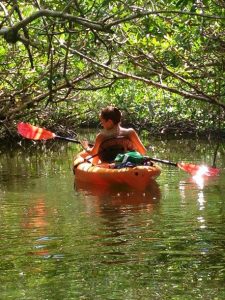Rainbow Springs State Park: A Jewel of Florida’s Natural Heritage
 Nestled in the heart of Marion County, Florida, Rainbow Springs State Park is a captivating destination known for its crystal-clear waters, lush landscapes, and a rich history that spans thousands of years. This state park, located just north of Dunnellon, offers visitors an immersive experience in Florida’s natural beauty, with its primary attraction being the Rainbow River, a pristine waterway fed by a first-magnitude spring.
Nestled in the heart of Marion County, Florida, Rainbow Springs State Park is a captivating destination known for its crystal-clear waters, lush landscapes, and a rich history that spans thousands of years. This state park, located just north of Dunnellon, offers visitors an immersive experience in Florida’s natural beauty, with its primary attraction being the Rainbow River, a pristine waterway fed by a first-magnitude spring.
Natural Beauty and Ecological Significance
Rainbow Springs is one of the largest springs in Florida, discharging an average of 400 to 600 million gallons of water daily. The spring’s waters are renowned for their clarity, creating a stunning blue-green hue that is both mesmerizing and refreshing. The Rainbow River, which the springs feed, is approximately 5.7 miles long, flowing southward into the Withlacoochee River. The river is a popular spot for swimming, snorkeling, kayaking, and tubing, drawing nature lovers and adventure seekers alike.
The park’s ecosystem is diverse, with a variety of habitats including hardwood forests, sandhill communities, and aquatic environments. These habitats support an array of wildlife, from otters and turtles to various bird species such as herons, hawks, and the occasional swallow-tailed kite. The park is also home to numerous plant species, including the iconic sabal palm, Florida’s state tree, and colorful wildflowers that bloom throughout the year.
Recreational Opportunities
Rainbow Springs State Park offers a wide range of recreational activities. The park’s headspring area is perfect for swimming, with designated areas ensuring both safety and enjoyment. Snorkeling is a favorite activity here, allowing visitors to observe fish and aquatic plants in their natural habitat. Kayaking and canoeing are also popular, with the gentle current of the Rainbow River providing a peaceful and scenic paddling experience. For those who prefer a more relaxed experience, tubing down the river is a quintessential Florida activity, offering a leisurely way to soak in the natural beauty.
The park’s trails offer opportunities for hiking and nature walks. The main nature trail winds through hardwood hammocks and sandhill communities, offering views of native flora and fauna. Along the way, visitors can explore the remnants of historical structures from the park’s days as a privately-owned attraction in the mid-20th century, including man-made waterfalls and ornamental gardens. These features add a layer of historical intrigue to the natural beauty of the park.
Cultural and Historical Significance
Rainbow Springs has been a site of human activity for over 10,000 years, with evidence of prehistoric human settlements found in the area. The springs have long been a source of fresh water and sustenance for indigenous peoples, and later for European settlers. In the 20th century, the springs became a popular tourist attraction, featuring glass-bottom boat tours, a zoo, and even a rodeo. Although the park was closed in the 1970s, it was later acquired by the state and reopened as Rainbow Springs State Park in 1995.
Today, the park serves as a reminder of Florida’s rich cultural history and the importance of preserving natural resources. Efforts to maintain the park’s ecological integrity are ongoing, with programs aimed at protecting the water quality of the Rainbow River and restoring native habitats.
Conclusion
Rainbow Springs State Park is a gem in Florida’s network of state parks, offering a blend of natural beauty, recreational opportunities, and historical significance. Whether you’re looking to explore the underwater world of the Rainbow River, hike through scenic trails, or simply relax in a picturesque setting, Rainbow Springs provides a quintessential Florida experience that captivates visitors of all ages.




